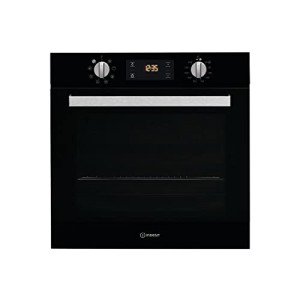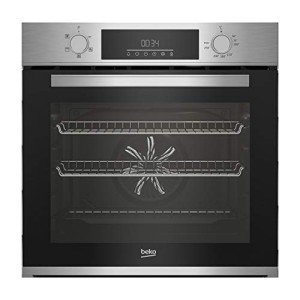
Cheap Oven UK
Add a review FollowOverview
-
Sectors Operaciones y Logística
-
Posted Jobs 0
-
Viewed 8
Company Description
This Is How Oven For Kitchen Will Look In 10 Years’ Time

Choosing the Right Oven for Your Kitchen: A Comprehensive Guide
Ovens have been a foundation of culinary undertakings for centuries, supplying an important device for both amateur cooks and expert chefs alike. As modern-day kitchen areas evolve, so too do the kinds of ovens available, each designed to satisfy the diverse requirements of cooking lovers. The following guide offers an in-depth summary of various oven types, their features, and considerations to remember when selecting the best oven for your kitchen.
Types of Ovens
When thinking about an oven for your kitchen, it is necessary to comprehend the numerous types readily available. Each kind of oven has unique characteristics that can influence cooking methods and general kitchen performance.
1. Conventional Ovens
Traditional ovens are the most fundamental type, often found in homes around the world. They normally utilize either gas or electric power and offer a simple cooking approach.

- Gas Ovens: Utilize natural gas or gas, offering instant heat and outstanding temperature level control.
- Electric Ovens: Use electric coils or a heating aspect, typically offering more even heat distribution.
2. Convection Ovens
Convection ovens are designed with a built-in fan that circulates hot air around the food, leading to much faster cooking times and more even results.
- Benefits:
- Reduced cooking times (up to 25% faster)
- Even baking and browning
- Drawbacks:
- May require adjustments to recipes (lower temperature or much shorter time)
3. Wall Ovens
Wall ovens are a popular option in contemporary kitchens, as they can be installed at eye level, conserving counter area and increasing ease of access.
- Single Wall Ovens: Ideal for smaller sized cooking areas, suitable for daily cooking.
- Double Wall Ovens: Increase capacity for large meals and multiple meals.
4. Range Ovens
Range ovens integrate both a cooking range (with burners) and an oven, offering a compact solution for kitchen areas with limited space.
- Freestanding Ranges: Standalone systems that can suit any kitchen design.
- Slide-in Ranges: Designed to fit comfortably in between cabinets for a more integrated look.
5. Steam Ovens
Steam ovens utilize steam rather of dry heat, protecting moisture and nutrients in food.
- Advantages:
- Healthier cooking choice
- Suitable for baking bread and cooking vegetables
- Considerations:
- May need additional actions for certain dishes
Key Features to Consider
When picking an oven, think about the following functions that can boost cooking experiences:
| Feature | Description |
|---|---|
| Size | Guarantee it fits your kitchen space and satisfies your cooking requires. |
| Self-Cleaning | Makes upkeep much easier, getting rid of the requirement for manual scrubbing. |
| Smart Technology | Ovens with Wi-Fi connection can streamline cooking through apps. |
| Temperature Range | A broader range can enhance cooking versatility. |
| Safety Features | Features such as automobile shut-off can boost kitchen safety. |
Tips for Choosing the Right Oven
Selecting the best oven can sometimes be a daunting task. Here are several pointers to streamline the process:
-
Identify Your Cooking Habits: Consider how frequently you cook and the types of meals you prepare. For instance, devoted bakers might choose a stove for even baking, while those who prepare roasts might lean towards a conventional oven.
-
Step Your Space: Before purchasing, measure the location where the oven will be put to guarantee it fits easily with your kitchen design.
-
Consider Your Budget: Ovens range widely in price. It is essential to set a spending plan and think about the long-lasting value of the appliance.
-
Read Reviews: Online evaluations can provide insight into a design’s performance and dependability in time.
-
Inspect Energy Ratings: Energy-efficient designs can save you cash on energy costs in the long run.
Upkeep and Care
To take full advantage of the life expectancy of your oven, appropriate maintenance is key. Follow these basic actions:
- Regular Cleaning: Make cleaning a routine after each usage, and use self-cleaning features when available.
- Check Seals: Ensure that the door seals firmly; this avoids heat loss throughout cooking.
- Calibration: Periodically inspect the oven temperature level for precision. An oven thermometer can assist with this.
- Expert Servicing: Schedule regular maintenance talk to an expert to ensure the home appliance operates effectively.
Frequently asked questions
What is the very best kind of oven for a little kitchen?
For small cooking areas, wall ovens or compact range ovens are excellent alternatives as they use up less space and can be set up to suit readily available cabinetry.
How do I maintain a gas oven?
Frequently examine the burners for obstructions and guarantee that the oven’s interior is cleaned up to avoid accumulation from spills and splatters.
Can I bake and broil in the same oven?
Yes, most contemporary ovens allow for both functions. Examine the user manual for particular instructions on running your oven.
What should I do if my oven isn’t warming properly?
First, inspect if it’s correctly plugged in or if the gas is streaming. If problems persist, seek advice from a professional to identify potential problems.
Is it worth purchasing a wise oven?
If cooking benefit and the latest technology interest you, investing in a smart oven can be rewarding, as they use a series of boosted cooking functions.
Selecting the best oven for your kitchen is crucial to both the functionality and satisfaction of your cooking experience. By thinking about the numerous types of ovens, vital functions, and upkeep tips, consumers can make an educated choice that meets their cooking needs and preferences. Whether you are a casual cook or an enthusiast, the ideal oven can substantially raise your culinary adventures.